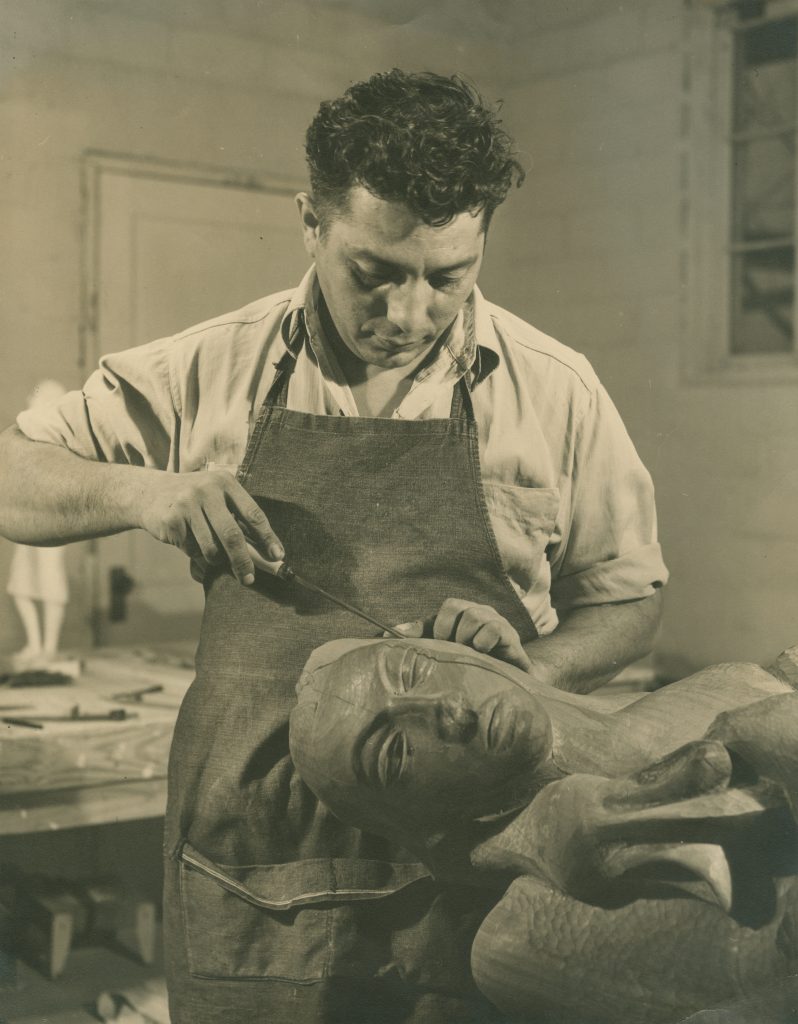The following is an excerpt from the exhibition catalogue for Octavio Medellín: Spirit and Form, opening for free at the Dallas Museum of Art on February 6, 2022.

In 1978, the artist Octavio Medellín (1907–1999) wrote a short text that appears to have been the beginning of a book project that he later abandoned. Opening with a poem, The Masterpiece, presumably by the artist, … it reads as a stream of consciousness, unedited and without paragraph breaks. At times the text seems akin to an artist’s statement…. On the third page he writes:
“…we think of materials as purely a medium, I personally believe that materials have a soul of their own particularly if you are to work directly with them, each one is different than the other. My mission was to search in them their behavior so that I communicate with them and develop a sensitive feeling and become part of them, not to take for granted their natural formation but to be inspired and invent a form that is not entirely what’s there, but a mixture of both.”
Medellín’s artistic practice was defined by his exploration of the duality that he alludes to in this unpublished text. He demonstrated a drive to understand and master new materials, beginning first with wood, stone, and clay, later expanding to include various forms of glass and metalwork. At the same time, regardless of facture, Medellín’s work can be characterized by its animate qualities—pose, movement, etc.—that the artist harnessed to provoke an emotional response. This “spirit” comes in part, as Medellín points out, from the materials themselves.
Given his view that an artist’s spirit contributes to an object’s ability to engage its viewers, Medellín was understandably cognizant of the role of his own personal history and identity in his work and its reception. Throughout his almost seven-decade career, he utilized pivotal events in his life as sources of inspiration for his work, such as his experiences of the Mexican Civil War or his transformative trip to Yucatán to study Maya ruins.
Medellín’s philosophies were … also at the heart of his approach to teaching. Over the course of his career, he taught at numerous institutions across Texas, his repertoire of classes expanding alongside his own artistic practice…. Stories and anecdotes abound of his legendary ability to guide students, and of the lingering impact of their interactions with him. Within the city of Dallas, Medellín’s legacy as a teacher has in some senses overshadowed his importance as an artist, but in fact the two roles are intertwined and inseparable—his connections to his students were an important source of inspiration and creativity.
This catalogue, and the exhibition … seeks first and foremost to draw attention to Medellín’s work and his unique place within mid-twentieth century art in North America. A pivotal individual within a network of artists and cultural figures that contributed to the development of modern art in Texas, Medellín also had significant connections throughout the wider field of “American” art, as well as to leading figures within Mexican Modernism. Despite his position at the intersection of so many important groups, Medellín’s work remains relatively overlooked.… This project represents the most expansive assessment of the artist’s career to date.
Dr. Mark A. Castro is The Jorge Baldor Curator of Latin American Art at the DMA.